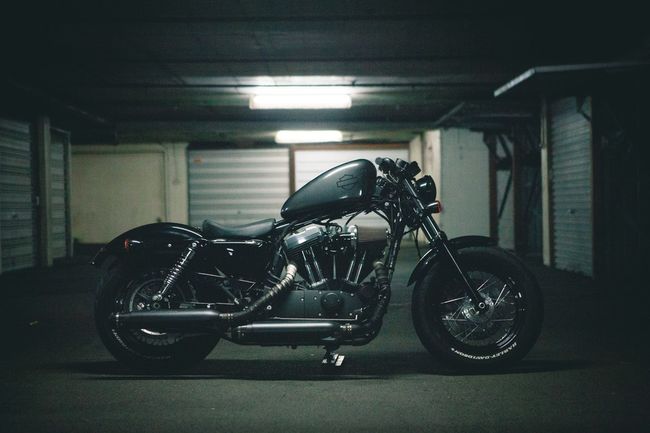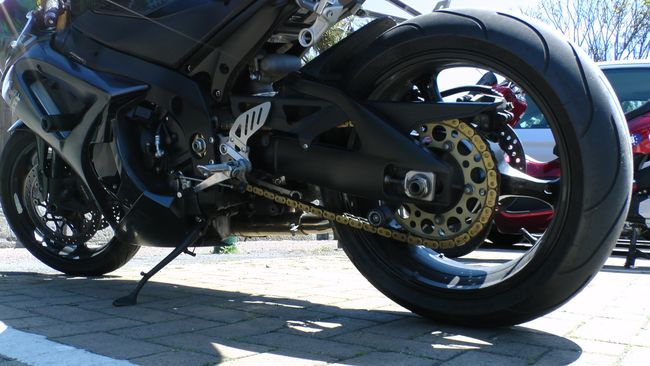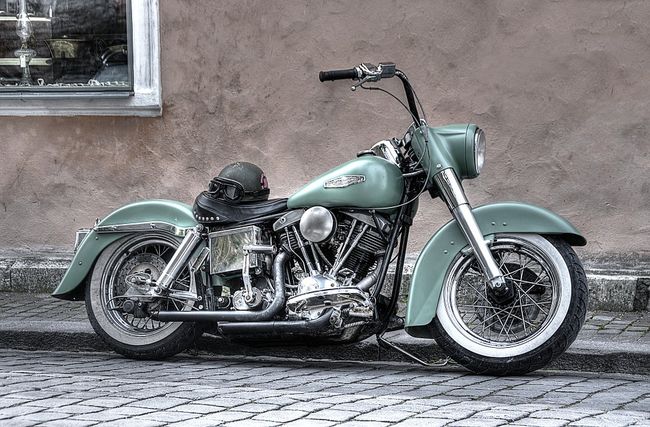Top Tips & Advice For Selling Your Motorcycle
Selling your motorcycle for a fair price takes preparation, but it is possible, and it isn’t rocket science. Read on, and discover the Very Best Top Tips for Selling Your Road or Dirt Motorcycle.
Concluding a fast, trouble-free sale and realizing a realistic price, is the ultimate goal when selling your motorcycle, whether it’s a road or dirt bike. Achieving this, like everything else in life, takes preparation, but it is possible, and it isn’t rocket science. Read on, and discover the Very Best Top Tips for Selling Your Road or Dirt Motorcycle.
Looks Are Everything
It’s not always easy parting with a bike; we get so sentimentally attached to the beasts that it can feel like turning your back on a best friend. Whatever the reason for the sale though, commit to doing it and do it right. You can be sure that the buyer would have done some of his or her own research before buying a bike so it could be useful for you to check out the type of thing they would be looking out for in our motorcycle buyer’s guide.
There’s no worse buzz kill for a sale than an unmotivated seller and whatever you do, don’t write something like ‘wife forces sale.’ It looks sad and pathetic. Anyway, moving on, let’s look at step one; take a good hard, realistic look at your bike.
It’s not always easy to see the flaws in your pride and joy, you’ve ridden it through rain and shine, and it has never let you down. In which case, it’s good to get someone who has nothing to lose or gain from the sale to check it over.
They will hopefully be objective and point out things like seat rips, leaking fork seals, cracked brackets, and tired paint. Make yourself a list and keep the tweaks to low buck fixes.
Fit for Purpose
Start with consumables, how are the tires? Plenty of tread, no big gouges or bald spots? You don’t necessarily have to replace both if it’s not needed just, give the remaining one a good scrub with a brush and soapy water. If you’re doubtful of your tire judgement take a look at this guide.

Cleaning will stop the old tire looking at odds with the new one, and a word of advice; nothing screams dodgy tire like the fake shine of tire black.
Next, check out the brake pads. As long as they’ve still got some meat left on them, they’re fine. If they’re thinner than a speeding ticket, you know what to do next. Not changing worn pads means the buyer will knock the cost of replacements off the asking price and look even closer at the rest of the bike.
Next on the list of consumables is the oil, so pull the dipstick. If what’s clinging to it looks, and smells, like burnt gravy, change it or be prepared to have your asking price demolished even further. Castrol is my preferred choice, you can pick up a bottle from Amazon for a reasonable price over here.
On a road bike, brake pads tend to wear evenly, and oil changes generally take place at regular service intervals. With a dirt bike, these are two items that get a particular bashing and unless you get an absolute newbie with a fist full of cash, not attending to these areas is sure to hit your bottom line.
Don’t forget the drive chain too. If it’s saggy, adjust it and give it a lube. Here’s an in-depth guide to motorcycle chain maintenance. Depending on the conditions, some dirt bike riders don’t lube their chain as it makes the sand stick and turn to grinding paste. A bit of lube, especially between the side plates, won’t hurt though, but it’s your call. Just make sure it’s adjusted correctly and runs freely. Check out our review on some of the best chains for your motorcycle

While you’ve got the chain lube out, spray a little down the clutch and throttle cable. It’s not as good as a certain moisture dispersing spray, but it’s better than nothing and does make the action smoother.
Do you remember the last time you took a look under your seat? Once again, it’s an area where seasoned bike buyers home in on most. Most electrical components these days are sealed for life, so looking at one tells you nothing.
If under the seat is reasonably neat, however, and the wiring harness doesn’t look like an explosion in a spaghetti factory, then it gives the impression of regular maintenance.
So, wipe everything down, tape-up any wear or tears in the wiring harness and wrap a couple of old spanners in a rag. Everyone likes to see tools under the seat.
If you’re prepping your dirt bike for sale, this part of the bike can get real gnarly. Dirt, dust, mud, even tiny critters are flung up from the wheels and get lodged underneath, so give the area a good clean. Even a spray of WD40 (or similar) and a wipe over with a clean rag, can work wonders.
The Spark of Life
While we’re under the seat and taking a look at the electrical components and wiring harness, this is an excellent time to give the handlebar controls a workout. Make sure that lights work (including high beam), indicators flash evenly, and brake lights come on when the lever and pedal are engaged. If you’re getting rid of a Harley, you might consider an aftermarket LED headlight that could get you a better deal.
Don’t forget the horn, and if the bike has been sitting around, ensure the battery has enough charge to spin the engine over easily. If I go to see a motorcycle that clicks when I hit the starter button, my spider sense starts tingling. If you know your battery can be a little temperamental, there may be a quick fix to as to why your motorcycle battery won’t start. If that guide doesn’t do the trick, it might be worth getting a new one and not burning through a potential buyer – I’ve already covered this topic in depth so here’s a great article on finding the best motorcycle battery. If you’re not in the mood to read the whole article, my recommended choice from Amazon would be the Mighty Max Battery.
So basically, if the starter motor is not turning over, It either means the owner hasn’t bothered to check and probably hasn’t dealt with a lot of other things too. It can also mean the starter motor is prone to jamming or there’s a fault in the charging system, either way, it’s not good.
Let’s move on to the bodywork, which includes the gas tank, panels, mudguards, and seat. Washing in soapy water and rinsing is a good start, and if what’s underneath looks ok, finish off with some wax.

If the paint’s oxidized or sun damaged, you’re going to need a cutting compound to get rid of the top layer without damaging the paint underneath. Worn or chipped paint around the contact areas means a re-spray, or if you’re lucky, just a blow-in with a spray gun or aerosol.
Missing badges from tanks and side panels look naff but are cheap to replace, and if you have any noticeable dents that are cost prohibitive to put right, point them out. The buyer will see them anyway, so make a point of drawing attention to them and say you’ve already allowed for it in the asking price.
As for the seat, the majority of both road and dirt bike seats are vinyl or some manmade leather look-a-like. Over time, these will crack and fade in the sun, the padding can flatten, and the whole thing gets ripped from careless boots.
As we’re trying to keep the ‘sale prepping’ to a shoestring budget, you have a few options. Namely, aftermarket seat covers are inexpensive, as you have to install them yourself.
You may be lucky enough to find a local upholsterer who can recover it, or if the whole thing is shot, try picking up a better one from bike breakers. By the way, gaffer taping a rip isn’t a fix.
Get Down and Dirty
With these necessary fixes in place, your bike will be looking a whole lot better already, but now its time to get down and dirty to give it the cleaning of a lifetime.
If you’ve got a main stand, use it, so you can rotate the wheels and grab yourself a stool, you’ll be here a while. Rotate the wheels by hand, and give them a spray of de-greaser. In the meantime, and while they’re soaking, take a small brush that fits between the spokes and work the fluid into the rims.
Once all the gunge has lifted, wash it off using soapy water, dry and polish. If you’ve got mag wheels, try the soap and water first as you don’t want to lift the paint or lacquer.
Next comes the engine. Borrow someone’s toothbrush and work the de-greaser into all the nooks and crannies. Take a look at any area where there’s a gasket, for oil misting or leaks. Don’t forget the carbs too; gasoline weeps leave aluminum with yellow streaks.
If you have a natural finish engine, depending on the metal and its finish (some engine casings are clear lacquered too), you can use any number of metal polishes. I haven’t seen an engine yet though, that hasn’t benefitted from a good spray of furniture polish.
This type of household spray is also suitable for factory-finished black engines that have a satin sheen to them. If you haven’t got time, or you want to give the engine a quick freshen, it’s back to a certain moisture dispersing spray. A proper dosing and polish will return the sheen to new.
Don’t worry if you see signs of wear and tear on the finish while you’re cleaning the engine; these are usually boot rubs from close contact. If the marks are on a road bike, then make sure the wear is commensurate with the mileage. In other words, if the engine shows signs of external wear, but the speedo reads 10k, delve deeper.
On a dirt bike, however, it’s not as critical. Buyers know that wear and tear comes thick and fast in this area. Just don’t try and disguise any cracks, welds or repairs to the engine/crankcases. It may seem at first like a brilliant idea, but explaining it to the new owner’s baseball bat won’t be fun.
Ok, the bike should by now look and sound as good as it can be, so now all you have left to do is sell, sell, sell!
To sell your bike you have to get it in front of an audience, and not just any audience, but one of potential buyers. The days of placing a lineage ad in the local newspaper are long gone. We are in the 21st century, and even dinosaurs like me need to tap into its techo-wealth.
Come Out Snapping
No-one is quite sure who said, ‘a picture tells a thousand words’ but plainly, they hadn’t seen the majority of online private bike ads. Pictures that are blurred have part of the bike chopped off, are so far away, or poorly lit that a potential buyer can’t tell what they are, don’t sell bikes. Check out our guide to selling a motorcycle on craigslist for examples of this.
If possible, get your motorcycle out in the daylight, preferably between noon and 2 pm. Contrary to popular belief, the sun won’t be right overhead, but it will be out of the way. Meaning you won’t inadvertently be shooting into the sun making your bike look like a black blob, or letting your own shadow block out any detail.
These photos aren’t for a Vanity Fair front cover, so forget the fancy angles. All you need are nice big clear shots of both sides of the bike. Take close-up details of the wheels, engine, instrument panel and any other aspects of the bike that are considered a selling point.

You may need to include photos of suspension upgrades, new tires, performance exhausts, or even one of the bike’s documentation and service history. Save the images as small Jpegs of around 200-500kb per image, which is more than enough detail for viewing on a computer screen, and means faster uploads for you, and downloads for the viewer.
While you’re snapping away with your smartphone, take a video too. Take a slow pass right around the bike, keeping it as smooth as possible. Hover over the good bits briefly, and if you can start the bike with one hand, do so, and take video footage of it ticking over or revving up.
If you’ve got a buddy to hand, take some footage of the bike being ridden up and down the road. Remember, this isn’t an entry in the Sundance Film Festival, so don’t get hung up on editing and sound quality. Now, load it on to YouTube, Vimeo, or similar and add a link to your online advert.
Clear photos and informative text are great, but being able to see a walk around of the bike is a fantastic sales tool.
Don’t Waffle
With the arty-farty stuff out of the way, you need the words to describe your pride of joy. Once again, don’t worry if you haven’t done this before, the publishers won’t be on the phone asking for their advance back.
Start by clearly stating the year, make and model as this gives any potential buyer the main information. Next, go into detail with the mileage, general condition, and any service history or up-to-date paperwork.
You can now include a bit about how brilliant the bike is, and how it never misses a beat, but don’t waffle too much.
Finally, put the price right underneath in large numbers and state whether it’s fixed or up for negotiation.
Don’t forget to add where the bike is (area, not address) when it’s possible to see it, and your necessary contact details. A phone number is a must, either cell or office, emails are fine but make sure you can answer them quickly. Failure to do so means that a potential buyer will time you out and may move on to the next one.
Before we get in the do’s and don’ts of selling your bike, I want to throw out one more option. Selling a bike fully built is a lot easier and simpler. If you have an older bike model there’s a good chance that someone out there is looking for parts. You wouldn’t believe how many weekend hobbyist motorcycle builders are searching forums and junk yards looking for used bike parts for their latest motorcycle rebuild. So many in fact that we actual put together a guide for anyone looking for more information on how to build a motorcycle from scratch while on a budget.
Do’s
- Clean your bike and carry out small repairs and maintenance.
- Point out obvious flaws that are easily visible as doing this will show you are honest and open.
- Leave all the aftermarket accessories on the bike.
- Include the bill for the engine rebuild.
- Let the buyer have a test ride.
- Take good clear photos and video wherever possible.
- Include all the facts.
- Be realistic in your asking price.
Dont’s
- Put lipstick on a pig and call it Monique.
- Cover up cracks or repairs in crankcases, frames or casings.
- Naively believe you’ll get back what you initially paid.
- Think anyone will pay extra just because you blew the engine up.
- Do it without taking the full asking price in cash first.
- Include pics of you pulling wheelies, jumping or burning out.
- Waffle.
- Think that a tin badge stating your bike is a limited edition or anniversary model means it’s necessarily worth more.
- Hesitate in buying another, after all, you now know what to look out for.
Conclusion
Selling a motorcycle is not an exact science. It’s one thing having someone interested in the make and model, but do it right, and you’ll sell them the idea before they even lay eyes on your ride. I hope you’ve found these tips for selling your motorcycle useful.
However, if you have specific experience in selling a bike, or tips that you’d like to share with us, you know what to do, and we’d love to hear from you.
